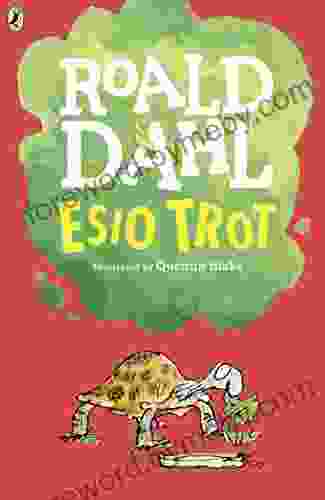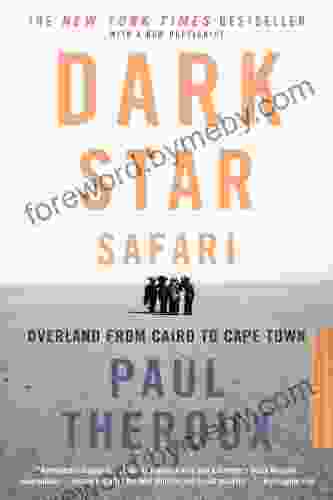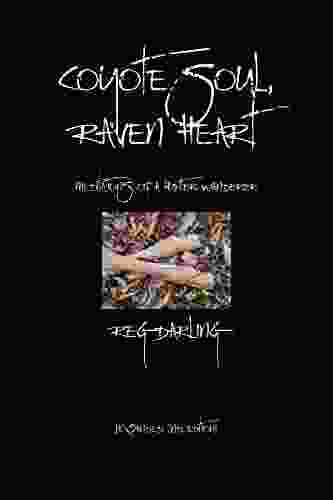Graffiti: Learning to See the Art in Ourselves

Graffiti is often seen as a form of vandalism, but it can also be a powerful form of art. It is a way for people to express themselves, to share their stories, and to make their voices heard. Graffiti can be found all over the world, from the walls of abandoned buildings to the sides of trains. It can be political, social, or personal. It can be beautiful, thought-provoking, or even dangerous.
4.5 out of 5
| Language | : | English |
| File size | : | 2641 KB |
| Text-to-Speech | : | Enabled |
| Screen Reader | : | Supported |
| Enhanced typesetting | : | Enabled |
| Word Wise | : | Enabled |
| Print length | : | 168 pages |
| Lending | : | Enabled |
The history of graffiti dates back to ancient times. The first known examples of graffiti were found on the walls of Egyptian tombs and temples. These early forms of graffiti were often used to record important events or to commemorate the dead. Over time, graffiti began to be used for more personal purposes, such as to express love, to make political statements, or to simply leave a mark.
In the modern world, graffiti has become a global phenomenon. It can be found in every major city, and it has become an important part of urban culture. Graffiti artists come from all walks of life, and they use their art to express a wide range of ideas and emotions. Some graffiti artists are motivated by political or social concerns, while others simply want to create something beautiful. No matter what their motivation, graffiti artists are all united by their desire to express themselves.
There are many different forms of graffiti. Some graffiti artists use spray paint to create elaborate murals, while others use markers or stickers to create simpler tags. Graffiti can be found on walls, trains, buses, and even cars. It can be political, social, personal, or simply decorative.
Graffiti has the potential to be a powerful tool for social change. It can be used to raise awareness of important issues, to challenge the status quo, and to give a voice to the voiceless. Graffiti artists have played a major role in social movements around the world, from the civil rights movement in the United States to the anti-apartheid movement in South Africa.
However, graffiti is not without its critics. Some people argue that it is a form of vandalism that damages property and detracts from the beauty of our cities. Others argue that it is a form of free speech that should be protected. The debate over graffiti is likely to continue for many years to come.
Whether you love it or hate it, graffiti is a powerful form of art that has the potential to change the world. It is a way for people to express themselves, to share their stories, and to make their voices heard. Graffiti is a reminder that art is not just found in museums and galleries. It is all around us, if we only take the time to look.
Further Reading
- The Graffiti Research Lab
- Street Art News
- WideWalls
4.5 out of 5
| Language | : | English |
| File size | : | 2641 KB |
| Text-to-Speech | : | Enabled |
| Screen Reader | : | Supported |
| Enhanced typesetting | : | Enabled |
| Word Wise | : | Enabled |
| Print length | : | 168 pages |
| Lending | : | Enabled |
Do you want to contribute by writing guest posts on this blog?
Please contact us and send us a resume of previous articles that you have written.
 Book
Book Novel
Novel Page
Page Chapter
Chapter Text
Text Story
Story Genre
Genre Reader
Reader Library
Library Paperback
Paperback E-book
E-book Magazine
Magazine Newspaper
Newspaper Paragraph
Paragraph Sentence
Sentence Bookmark
Bookmark Shelf
Shelf Glossary
Glossary Bibliography
Bibliography Foreword
Foreword Preface
Preface Synopsis
Synopsis Annotation
Annotation Footnote
Footnote Manuscript
Manuscript Scroll
Scroll Codex
Codex Tome
Tome Bestseller
Bestseller Classics
Classics Library card
Library card Narrative
Narrative Biography
Biography Autobiography
Autobiography Memoir
Memoir Reference
Reference Encyclopedia
Encyclopedia John Harrison
John Harrison Frederick Douglass
Frederick Douglass Louise Katz
Louise Katz William Shatner
William Shatner Polina Bardaeva
Polina Bardaeva Rif Winfield
Rif Winfield Frederick Amrine
Frederick Amrine Explore Towin
Explore Towin Ethan M Rasiel
Ethan M Rasiel Frances Wood
Frances Wood Erickson Karnel
Erickson Karnel Solrunn Nes
Solrunn Nes Phil Knight
Phil Knight Franz Bardon
Franz Bardon Lisa Maliga
Lisa Maliga Judy Barron
Judy Barron Fiore Tartaglia
Fiore Tartaglia Erica B Marcus
Erica B Marcus Eva Mauer
Eva Mauer Tracy Osborn
Tracy Osborn
Light bulbAdvertise smarter! Our strategic ad space ensures maximum exposure. Reserve your spot today!

 Raymond ParkerUnveiling the Enchanting Realm of "The White Spirit: A Novel of King Arthur"
Raymond ParkerUnveiling the Enchanting Realm of "The White Spirit: A Novel of King Arthur" Lord ByronFollow ·5.1k
Lord ByronFollow ·5.1k Tennessee WilliamsFollow ·9.4k
Tennessee WilliamsFollow ·9.4k John ParkerFollow ·13k
John ParkerFollow ·13k Charles BukowskiFollow ·9.3k
Charles BukowskiFollow ·9.3k Robert BrowningFollow ·6.5k
Robert BrowningFollow ·6.5k Kelly BlairFollow ·11k
Kelly BlairFollow ·11k Ed CooperFollow ·3k
Ed CooperFollow ·3k Gavin MitchellFollow ·13.6k
Gavin MitchellFollow ·13.6k

 Al Foster
Al FosterDive into the Enchanting World of Manatees: An...
Unveiling the Secrets of the Gentle...

 Isaac Mitchell
Isaac MitchellThe Farm Reggie and Friends: US Version - A Captivating...
A Heartwarming Tale that Embraces...

 Esteban Cox
Esteban CoxThe Interior Design Handbook: Your Comprehensive Guide to...
Are you ready to...

 William Wordsworth
William WordsworthFall Head Over Heels for "Esio Trot" by Roald Dahl: A...
Prepare to be charmed, amused, and utterly...

 Caleb Carter
Caleb CarterBlack Clover Vol Light Frida Ramstedt: A Thrilling...
Prepare to be spellbound by...

 Richard Simmons
Richard SimmonsFantastic Mr. Fox: A Literary Adventure That Captivates...
In the realm...
4.5 out of 5
| Language | : | English |
| File size | : | 2641 KB |
| Text-to-Speech | : | Enabled |
| Screen Reader | : | Supported |
| Enhanced typesetting | : | Enabled |
| Word Wise | : | Enabled |
| Print length | : | 168 pages |
| Lending | : | Enabled |










